There’s an old saying: If you find yourself standing in a deep hole with a shovel in your hands, stop digging. So if you’ve been gaining weight, but you haven’t been making any changes to your daily habits, you’re just digging yourself a little deeper into the hole every single day but still ask yourself “why is this happening?”
In fact, as much as you may guilt-trip ourselves over a couple of innocent indulgences—the decadent dessert you broke down and ordered, or the extra helping you served yourself of a pasta dish you finally mastered cooking—it’s not the occasional extravagances we should focus on. An extra 500 or even 1,000 calories a week isn’t going to make a dent on the scale.
Instead, it’s the little things you do, day in and day out, things that you barely notice you’re doing, that determine whether your waistline is trending outward or inward.
And that’s great news! Why? Because if you can suss out your own sneaky weight-gain habits, you can completely change your life without having to, well, change your life. That’s why we uncovered the bad habits that are the root causes of why you’re gaining weight. Tweak just a few of these everyday routines and you could be on your way to a flatter belly in no time! And you can start out on the right track by adding
It sounds crazy, but stop buying foods marketed as low-fat or fat-free, even weight-loss smoothies. The answer to “does fat make you fat” is “no.” Typically, low-fat products save you only a few calories. Only a few, you ask? It’s because food manufacturers replace harmless fats with low-performing simple carbohydrates that digest quickly—causing a sugar rush and, immediately afterward, rebound hunger. Researchers from the University of Alabama at Birmingham found that meals that limited carbohydrates to 43% were more filling and had a milder effect on blood sugar than meals with 55% carbohydrates. That means you’ll store less body fat and be less likely to eat more later.
Looking for more tips? Sign up for our newsletter to get the latest food news delivered straight to your inbox.
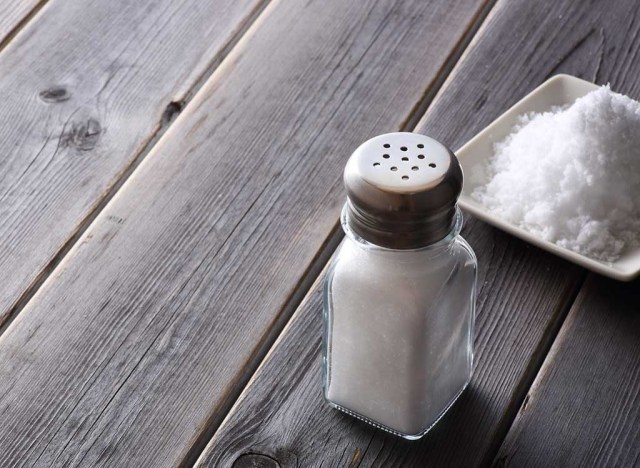
Your favorite trail mix only has 150-calories, but did you check to see how much sodium is lurking inside the package? All too often, those who aren’t suffering from a health condition overlook that part of the nutrition label. “Americans consume, on average, about 50% more than the daily recommended intake of salt, and most of the excess sodium is coming from processed foods like frozen waffles, bagels, cheese cottage cheese, veggie burgers and salad dressings,” says Michelle Loy, MPH, MS, CSSD, Registered Dietitian Nutritionist and owner of Go Wellness in Orange County, California.
Does salt make you fat? It’s not likely to cause fat gain, but salt will make you look fatter as it causes bloat. Sticking to The Institute of Medicine’s daily recommendation of 2,300 milligrams per day or less can help you keep a bloated belly, high blood pressure, and other health conditions at bay. And for more, uncover the 25 Foods High in Sodium You Should Watch Out For!
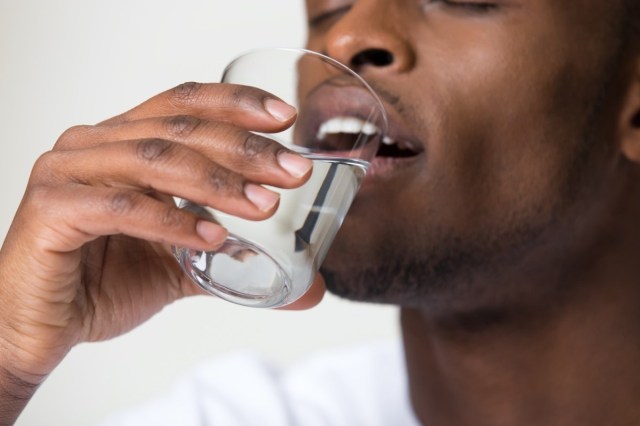
Adequate water intake is essential for all your body’s functions, and the more you drink, the better your chances of staying thin. In one University of Utah study, dieting participants who were instructed to drink two cups of water before each meal lost 30% more weight than their thirsty peers. And you can magnify the effect by adding ice. German researchers found that six cups of cold water a day could prompt a metabolic boost that incinerates 50 daily calories. That’s enough to shed five pounds a year! Weight gain isn’t the only repercussion of consistent dehydration, there are also 7 Side Effects of Not Drinking Enough Water.

According to Wake Forest researchers, dieters who sleep five hours or less put on 2½ times more belly fat, while those who sleep more than eight hours pack on only slightly less than that. Shoot for an average of six to seven hours of sleep per night—the optimal amount for weight control. And burn calories overnight with these 8 Ways to Lose Weight While You Sleep!

Although you may get scanned for high cholesterol or diabetes at your annual exam, doctors don’t typically test or look for physical signs of nutritional deficiencies—which can be dangerous! Loy suggests having your vitamin D levels checked if nothing else. “Many people are deficient and don’t even know it—and not getting enough may increase the risk of osteoporosis, heart disease, and certain types of cancer,” she warns. Read more to discover the Essential Vitamins You’re Not Getting Enough Of.
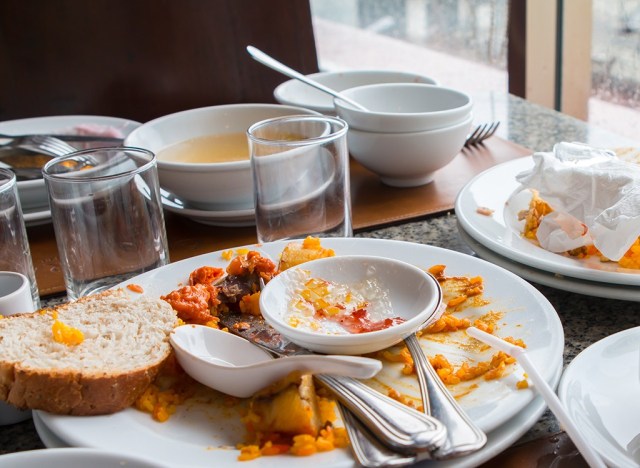
If your body has one major flaw, this is it: It takes 20 minutes for your stomach to tell your brain that it’s had enough. A study in the Journal of the American Dietetic Association found that slow eaters took in 66 fewer calories per meal, but compared to their fast-eating peers, they felt like they had eaten more. What’s 66 calories, you ask? If you can do that at every meal, you’ll lose more than 20 pounds a year! To lose even more weight, don’t miss this essential list of 30 Nutrition Myths—Busted!
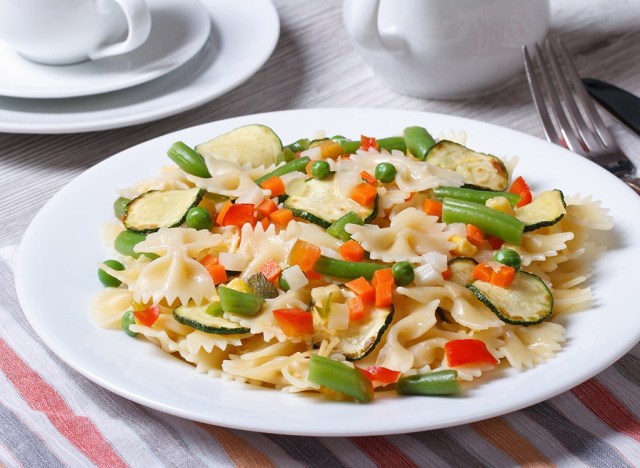
One study published in the journal Obesity Science & Practice found that when given an option, a whopping 98.6% of obese individuals opt for larger plates. Translation: More food, more calories, and more body fat. Keep your portions in check by choosing smaller serving dishes. If need be, you can always go back for seconds.

A University of Vermont study found that overweight participants who reduced their TV time by just 50% burned an additional 119 calories a day on average. That’s an automatic 12-pound annual loss! Maximize those results by multitasking while you watch—even light household tasks will further bump up your caloric burn. Plus, if your hands are occupied with dishes or laundry, you’ll be less likely to mindlessly snack—the other main occupational hazard associated with tube time.
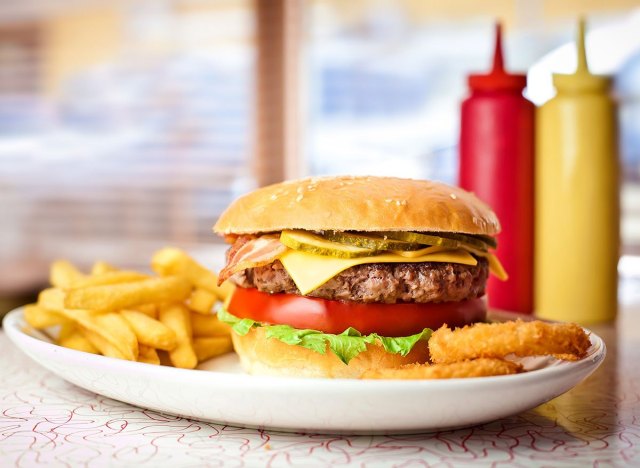
A study in the Journal of Public Policy & Marketing shows that compared to ordering a la carte, you pick up a hundred or more extra calories by opting for the “combo” or “value meal.” Why? Because when you order items bundled together, you’re likely to buy more food than you want. You’re better off ordering your food piecemeal. That way you won’t be influenced by pricing schemes designed to hustle a few more cents out of your pocket. And just so you know, here are What 11 Nutrition Experts Eat at McDonald’s!
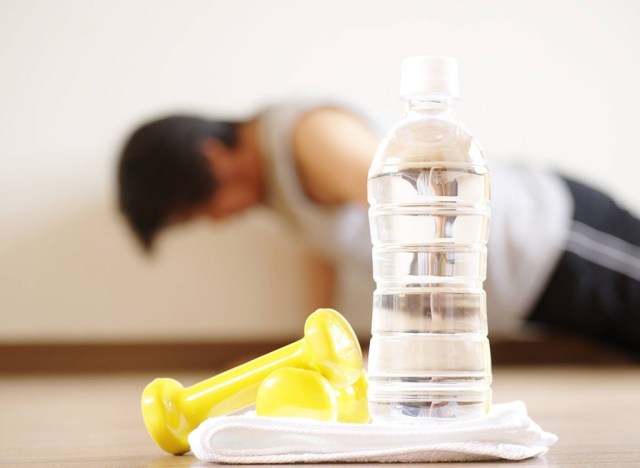
Good news here: By reading this, you’re already forming habits that can help you shed pounds. When Australian researchers sent diet and exercise habits to 75 people, they found that the recipients began eating smarter and working more physical activity into their daily routines. Not surprisingly, the habits (and waistlines) of the non-recipients didn’t budge.
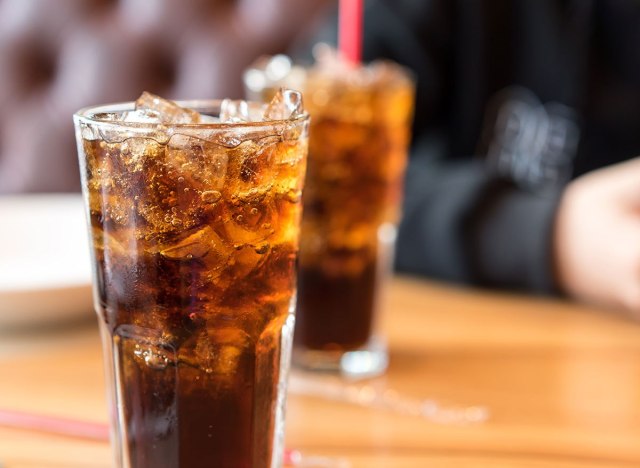
The average American guzzles nearly a full gallon of soda every week. Why is that so bad? Because a 2005 study found that drinking one to two sodas per day increases your chances of being overweight or obese by nearly 33%. And diet soda is no better. When researchers in San Antonio tracked a group of elderly subjects for nearly a decade, they found that compared to nondrinkers, those who drank two or more diet sodas a day watched their waistlines increase five times faster. The researchers theorize that the artificial sweeteners trigger appetite cues, causing you to unconsciously eat more at subsequent meals. There are immense benefits of giving up soda!

You manage to avoid sweets, which is pretty impressive—especially on super stressful days—but you’ve got to let off some steam somehow. If you don’t, it could lead to chronically elevated cortisol levels, causing sleep and immunity problems, blood-sugar abnormalities and weight gain. How should you chillax? Registered dietitian Lori Zanini, RD, CDE, says stress relief is very individualized, so what helps your BFF relax may not work for you. Give a few different tactics a try and see what works best for you. Practicing yoga, meeting up with friends and unplugging from technology for an evening are all things Zanini says are worth a shot.

If you’ve just hopped on the Paleo or low-carb bandwagon, proceed with caution! “Often diets that cut out entire food groups do not allow for the balance and moderation we need to follow a healthy, lifelong eating plan,” warns Zanini. “Plus, dieters who follow these plans may be prone to potentially dangerous nutritional deficiencies. Or they may simply get bored with their restricted plan and end up overeating down the road,” warns Zanini. To learn more, we put together a definitive guide to The Best & Worst Diets for Weight Loss.
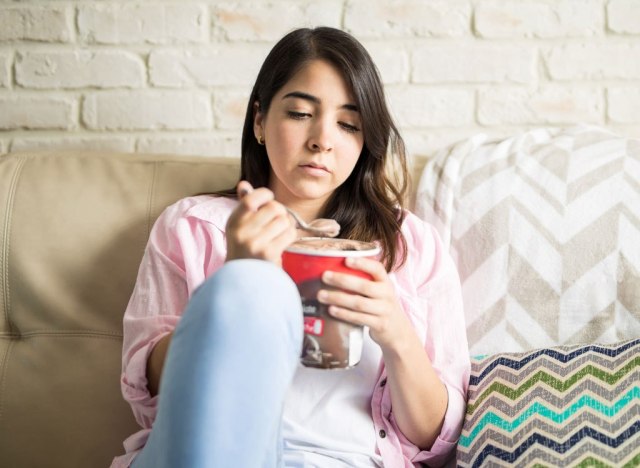
A study from the University of Alabama found that emotional eaters—those who admitted eating in response to emotional stress—were 13 times more likely to be overweight or obese. If you feel the urge to eat in response to stress, try chewing a piece of gum, chugging a glass of water, or taking a walk around the block. Create an automatic response that doesn’t involve food and you’ll prevent yourself from overloading on calories.
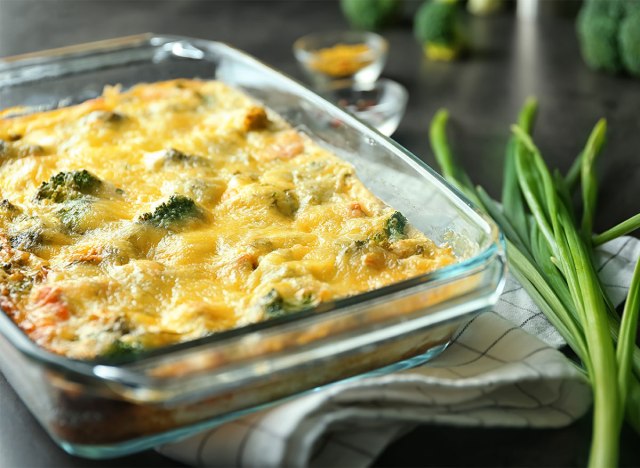
Just because your meal is healthy doesn’t mean you don’t have to practice portion control. Remember, even virtuous foods have calories! Half of your plate should be filled with veggies and the remaining half should hold a cell phone-sized serving of lean protein, a fist-sized serving of grains, and a bit of fat no larger than the size of your pointer finger.
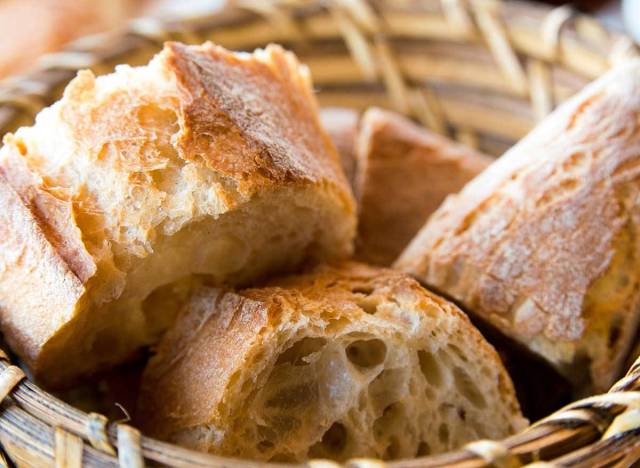
Breadsticks, biscuits, and chips and salsa may be complimentary at some restaurants, but that doesn’t mean you won’t pay for them. Every time you eat one of Olive Garden’s free breadsticks or Red Lobster’s Cheddar Bay Biscuits, you’re adding an additional 150 calories to your meal. Eat three over the course of dinner and that’s 450 calories. That’s also roughly the number of calories you can expect for every basket of tortilla chips you get at your local Mexican restaurant. What’s worse, none of these calories comes paired with any redeeming nutritional value. Consider them junk food on steroids.

Let’s answer the question again: does fat make you fat? No! You know that eating trans fats can increase your risk of heart disease, weight gain, and stroke, so you’re smart to stay away. But not all fats need to make your “do not eat” list. Consuming healthy fats like flax seeds and nuts can actually help you slim down and stay healthy. “Fats not only help us absorb many of the vitamins from our diets, but they also help keep us fuller longer, which can aid weight loss efforts,” explains Zanini. She suggests consuming one serving of healthy fats each time you sit down to eat. This could be 1/4 cup of almonds or walnuts, some sautéed veggies cooked with a tablespoon of olive oil or a few slices of avocado.
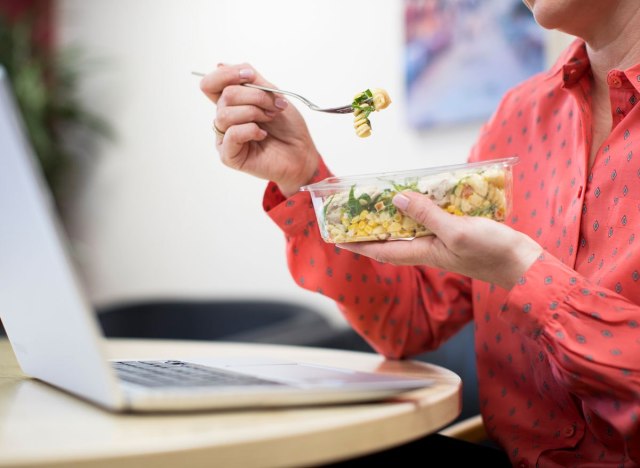
You may think it’s beneficial for your hourly pay, or to prove yourself to your boss, but eating your lunch at your desk isn’t doing your waistline any favors. And you’re not the only one doing this. According to research conducted by the NPD group, roughly 62% of working American professionals dine “al-desko.” The issue is that you’re eating distractedly, which can cause you to consume up to 50% more calories than you intended, according to a 2013 review in the American Journal of Clinical Nutrition. Instead, take a minute off from work and dine in the breakroom, at a nearby park, or even at a restaurant.
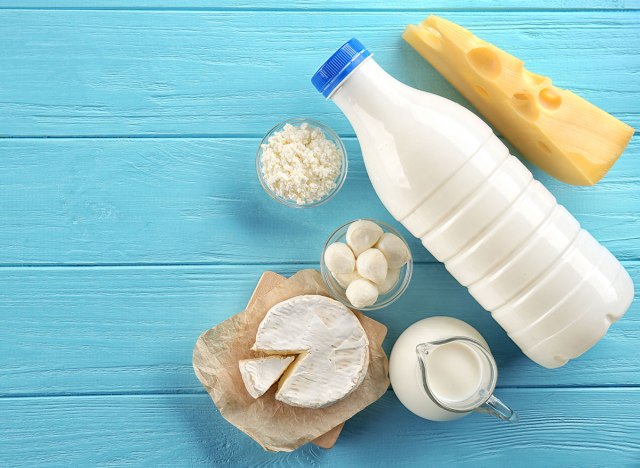
Do you always feel bloated after eating grains? Are you a dairy-lover but constantly feel congested? Many of us try to work through these problems, brushing them off our shoulders like they’re not an issue. But in reality, they might be signs of a food intolerance or allergy, which could be contributing to extra inflammation, a weakened immune system, and weight gain. Learn to listen to what your body tells you by keeping note of any discomforts in a food journal.

“Alcohol can make you drowsy, but it inhibits your ability to get quality deep sleep later at night. Ideally, don’t have any drinks 90 to 120 minutes before bedtime. This will allow enough time for your body to metabolize alcohol before your body transitions into the deep stages of sleep,” says Dr. Mike Roussell, PhD.
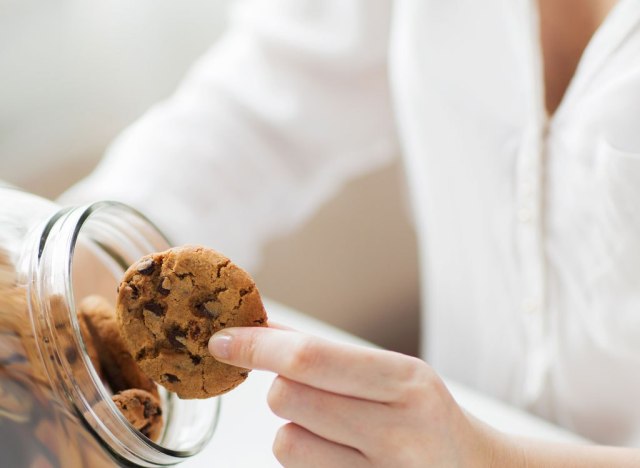
Before you can come “in with the new,” you have to go “out with the old!” Because researchers have found that people will reach for whichever food is closer—regardless of whether it’s an apple or popcorn—it would benefit you to get rid of any snacks that could derail your slim-down efforts. Don’t believe us? Well, how about this: a study by Cornell University researchers, found that women who have soda sitting on their countertops weigh an average of 26 pounds more, cereal an additional 20 pounds, and cookies about 8 pounds more compared to those with clean countertops. The lesson is clear: Throw your junk food in the junk bin to make better choices and lose weight. 40 Nutrition Experts Told Us The Foods You Should Be Eating Every Day, so you can replace that junk with these healthy eats!
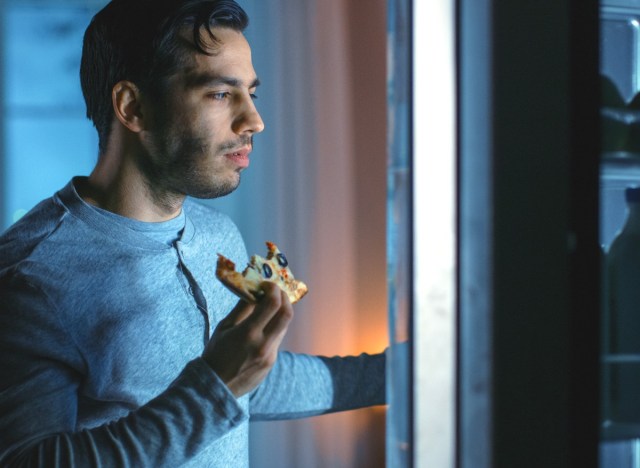
Just because you’re going to see a movie doesn’t mean you need to buy an extra-large popcorn. The same goes for that leftover food from the morning meeting that’s been placed in the breakroom. Just because it’s free—or because you’re bored—doesn’t mean you should eat. Whenever you see food that’s tempting you, ask yourself, “Am I actually hungry?” Test yourself by knocking back a cup of water and waiting 10 minutes. Around 60% of the time, people inappropriately respond to thirst by eating instead of drinking, according to a Physiology & Behavior study. It’s one of the reasons you’re always hungry.
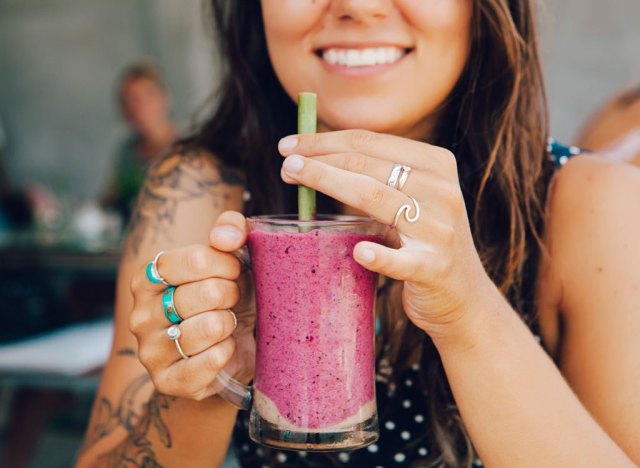
Yes, this bad eating habit goes for everything from sodas and alcohol to juice cleanses and bottled teas. That’s because beverages often lack healthy fats and fiber: two satiating nutrients that keep hunger pangs at bay. A study published in the American Journal of Clinical Nutrition found that participants ended up drinking more (and thus consumed a greater number of calories) until they felt satisfied, compared to when they ate solid food.
There are several factors at play when it comes to satiety, and experts believe that both the sound and the physical act of chewing helps monitor your consumption; they think chewing will even increase satiety better than slurping. So, take a cue from a recent study published in the same journal—which found that thick smoothies made people feel fuller than a thin drink with the same amount of calories—by adding in a generous scoop of Greek yogurt and a sprinkling of crunchy nuts to your protein shakes in the mornings.

No, it’s not because your metabolism slows down after this time—that’s a common food myth. But it is true that late-night eaters are more likely to gain weight compared to those who take advantage of the early bird special, according to a study published in the journal Appetite. It’s not because they don’t burn those calories as rapidly; it’s because these night owls are more likely to binge eat (after starving themselves since lunch) and subsequently choose unhealthy foods high in sugar and fat to quickly put in their rumbling tummies. Not only will these high-energy foods pack on the pounds, but many of them can make it harder to fall asleep. And if you didn’t already know, getting enough sleep is one of the answers to how to lose 10 pounds.

When it’s time to order out, here’s our advice: order ahead of time. Like, right after you get in the office. Researchers from the University of Pennsylvania and Carnegie Mellon University found that when people ordered lunch more than an hour before eating, dieters chose meals with an average of 109 fewer calories than those who ordered immediately before lunch. The reasoning behind the saved calories? Your willpower to choose healthy meals rapidly deteriorates when your mind is distracted by a rumbling stomach that craves energy-dense food. Talk about being hangry.
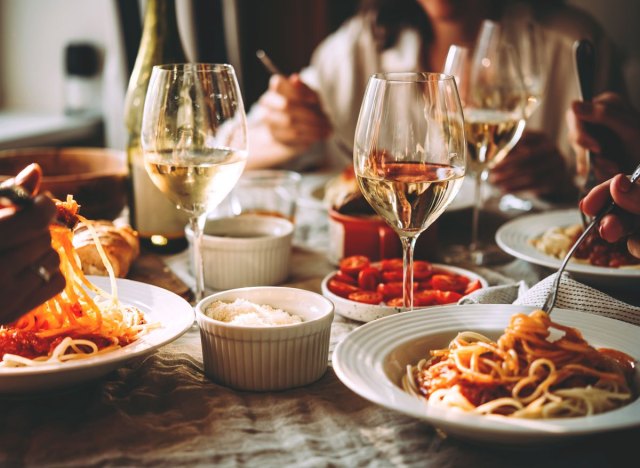
Chefs often add fat and salt to make meals taste better—but these ingredients aren’t necessarily something they advertise on the menu. Since you’ve already taken such care to choose a meal that sounds healthy, take the extra step and ask if there is any cream or butter in your dish. If there is, ask for your veggies and meats to be cooked dry and have sauces come on the side so you control how much ends up on your plate. After crunching the numbers, we discovered that no matter what kind of restaurant you’re dining at, you can save up to 1,000 calories at each meal by making this simple request!


























